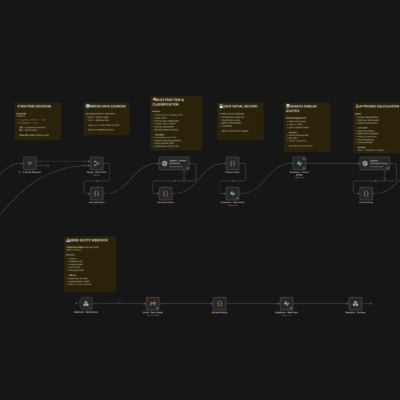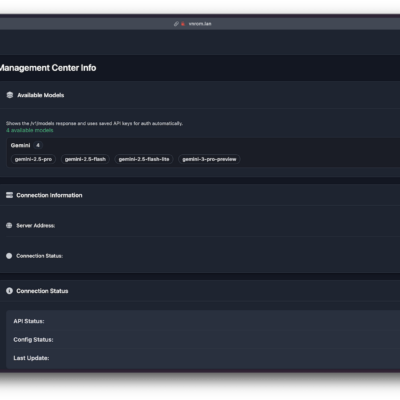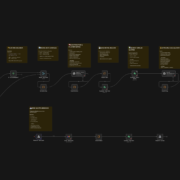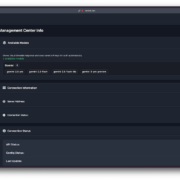Discussions around artificial intelligence (AI) in the context of the labor market have long ceased to be the exclusive domain of scientific circles. Today, this is a question that worries almost every graduate: some are watching the development of neural networks with apprehension, some see them as a powerful tool for increasing efficiency, and some are already using AI technologies to solve everyday problems. But how much do current algorithms really affect the labor market? A new IMF (International Monetary Fund) report, upon re-analysis, showed that the range of professions subject to automation is expanding even more than previously assumed.
In this article, we look at how perceptions of vulnerable occupations are changing, why high risks of displacement are often associated with cognitive and routine tasks rather than just physical work, and what the overall impact on society might be. We also consider several possible scenarios and offer practical recommendations for governments, businesses, and graduates to better prepare for the changes ahead.
Of course, some graduates may be worried because artificial intelligence can already replace people without much experience in various fields. But do not despair because, with the knowledge you received in college and a good resume, you can get a job. By the way, if you need any essay help or struggle with writing a resume, writing services can assist you. You will receive a text that will be able to present you in the best light to employers.
The scale of AI and automation’s impact on the labor market
The first question that usually worries graduates is the scale of the upcoming changes. Until recently, various analytical agencies reported that automation and AI somehow affect 40% of all jobs in the world. Particular attention was paid to developing countries, where the vulnerability level can reach 60% since there are more jobs in the service, information technology, and finance sectors. However, the latest IMF report emphasizes that the estimate may fluctuate upwards, given the emergence of new powerful tools based on generative neural networks.
The situation in developing countries looks slightly less alarming (at 40%), and in low-income countries with a predominantly agricultural sector, automation affects about 26% of jobs. However, everything can change dramatically here if access to digital technologies and infrastructure increases: if robotics and algorithms make their way to remote regions, the risk of mass layoffs will also increase.
It is worth understanding that the statistical indicator “40% of jobs are at risk” does not mean that people will suddenly be fired en masse and their work will be performed by robots. More often, we are talking about partial automation of functions that previously required human participation. For example, in the accounting profession, many tasks related to communication and non-standard situations remain, but routine operations for reconciling accounts are transferred to smart algorithms. For businesses, this means increased efficiency, and for graduates, the need to master new competencies.
In any case, the gap between countries and industries may increase. Developed countries are implementing AI faster, but they also feel the pressure of automation on the labor market more strongly, while less technologically advanced countries may seem to be in a calmer situation in the near future. However, “lagging” regions risk remaining on the periphery of the new technological revolution, which threatens economic backwardness for many years to come.
Professions with a high risk of substitution (50–100%)
According to the updated data of the IMF report, it was possible to identify even more professions where AI can replace a significant part of the functions performed by humans today. The high-risk category includes industries where routine, repetitive, or easily formalized activities prevail. Below are the main groups and the corresponding figures.
Telemarketers (90–100%)
Chatbots are already able to make cold calls and even recognize the client’s voice response to adapt their speech. They do not get tired, do not require breaks, and can work around the clock, which makes them more effective than live operators. For telemarketers, the risk is almost maximum.
Clerks, office workers, and accounting assistants (50–80%)
Most of their tasks come down to working with documents, databases, and financial reports. Algorithms and specialized programs are already capable of automating data entry, file sorting, and even generating final reports with minimal human involvement.
Call center operators (80–100%)
Voice bots and neural networks are becoming more and more “human”: they can conduct consultations, recognize emotions in voices, and offer optimized communication scripts. As a result, many companies are switching call centers to fully automated solutions.
Copywriters and technical writers (50–75%)
Artificial intelligence is already successfully writing short texts, product descriptions, news, and even scientific reviews. AI does it faster and cheaper if we are talking about routine content (for example, the same type of descriptions for an online store). A copywriter has to look for more creative niches to remain in demand.
Accountants and auditors (50–70%)
Machine learning-based algorithms can quickly balance sheets, identify errors, and generate financial statements. The human factor is still important for complex analysis and decision-making, but the amount of manual work is noticeably reduced.
Bank clerks, cashiers (60–80%)
Online banking, electronic transfers, mobile applications and fintech services have already gained leading positions, reducing the need for traditional bank branches. Many operations that were previously performed by cashiers are now easily performed through applications and ATMs with additional functions.
Postal workers (60–90%)
The spread of emails and instant messengers reduces the volume of paper mail, and drones and logistics robots are increasingly used for fast delivery of parcels. Human hands are certainly still needed, but demand is falling every year.
Pharmacists (50–70%)
AI is capable of analyzing a patient’s medical data and providing accurate recommendations on medications, right down to the dosage selection. In the pharmacy business, many processes, including inventory control, sales, and consulting, can be outsourced to algorithms.
For those graduates whose profession falls into this category, the main question is, “What to do to avoid being left with nothing?” On the one hand, the risks are really high: routine tasks are taken over by robots or algorithms. On the other hand, the human factor remains unchanged in more complex, atypical situations and creative aspects of work. This is where the emphasis should be shifted, developing skills that are difficult (or not yet possible) to automate.









